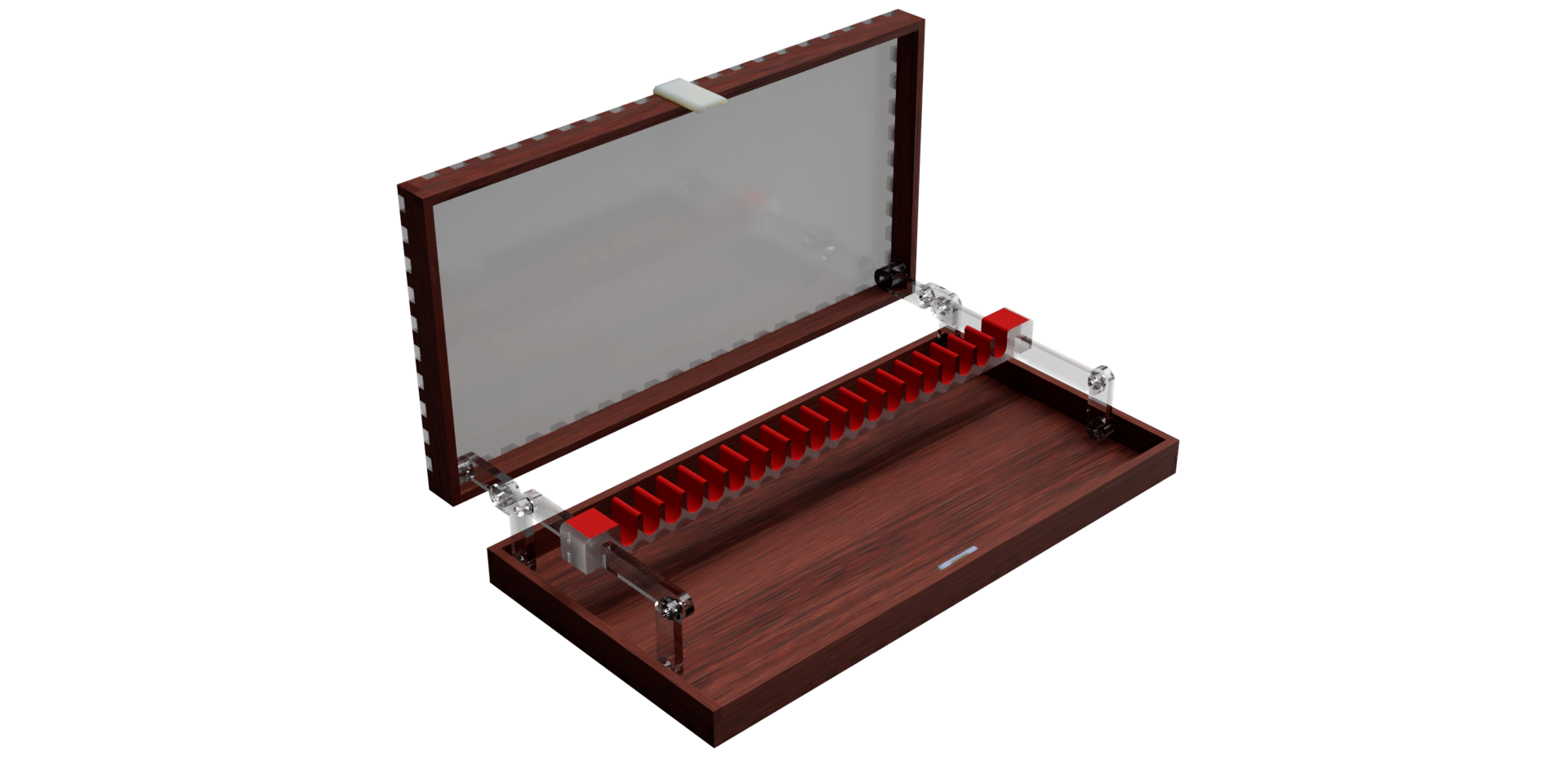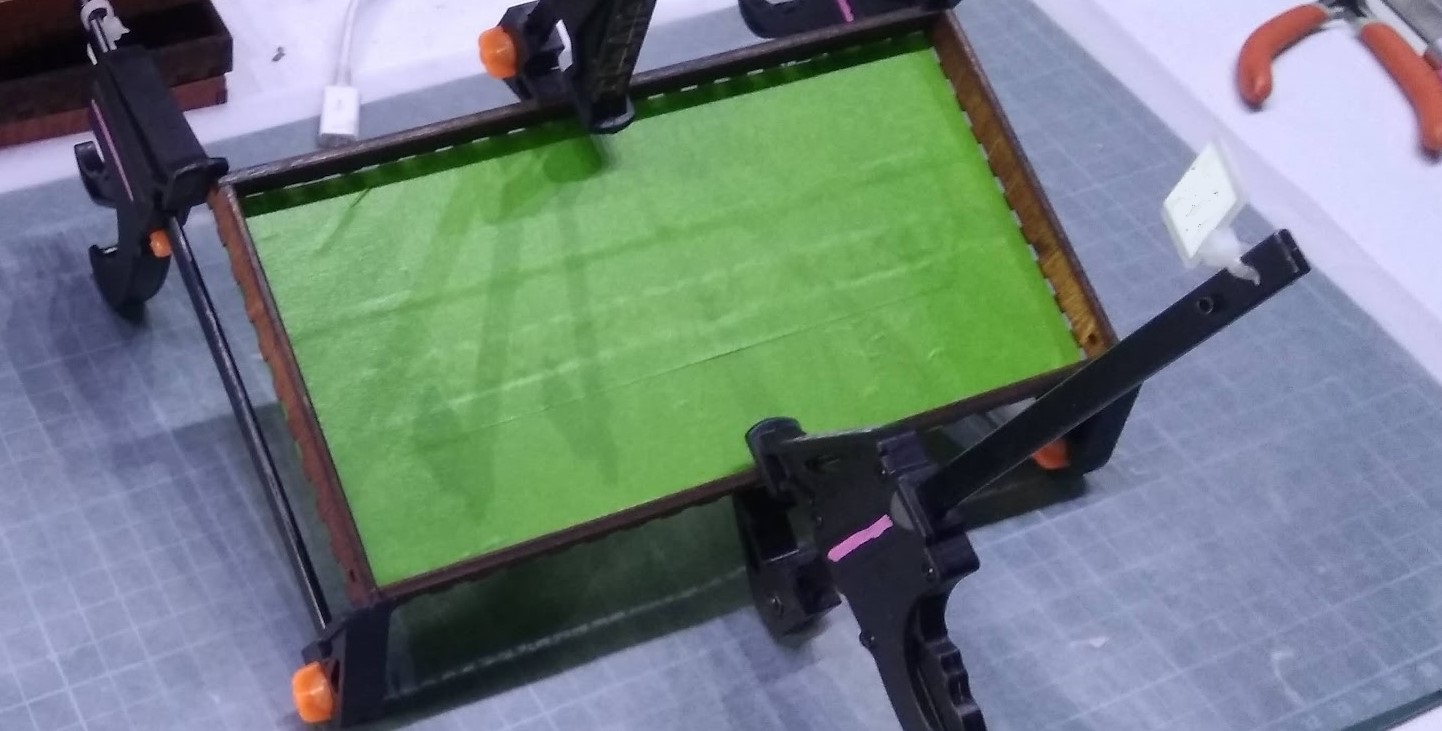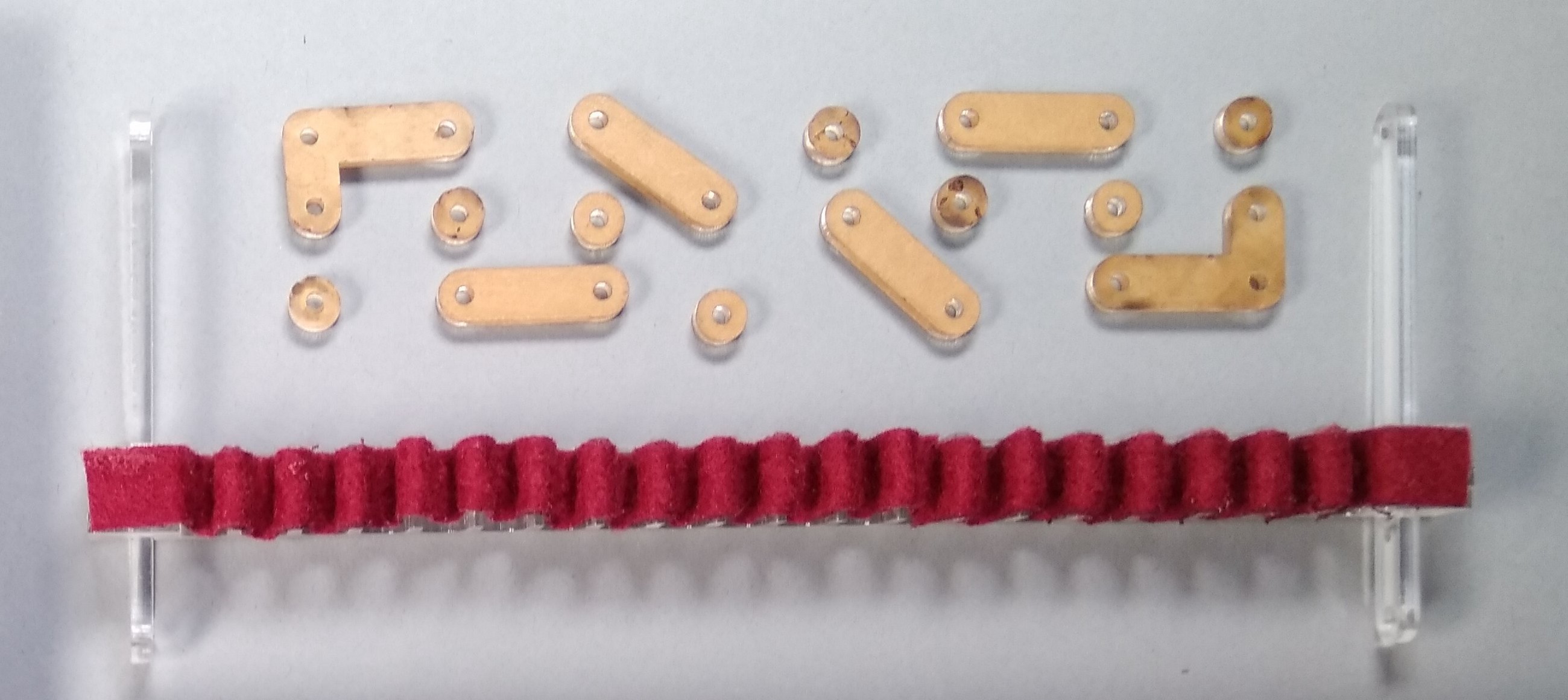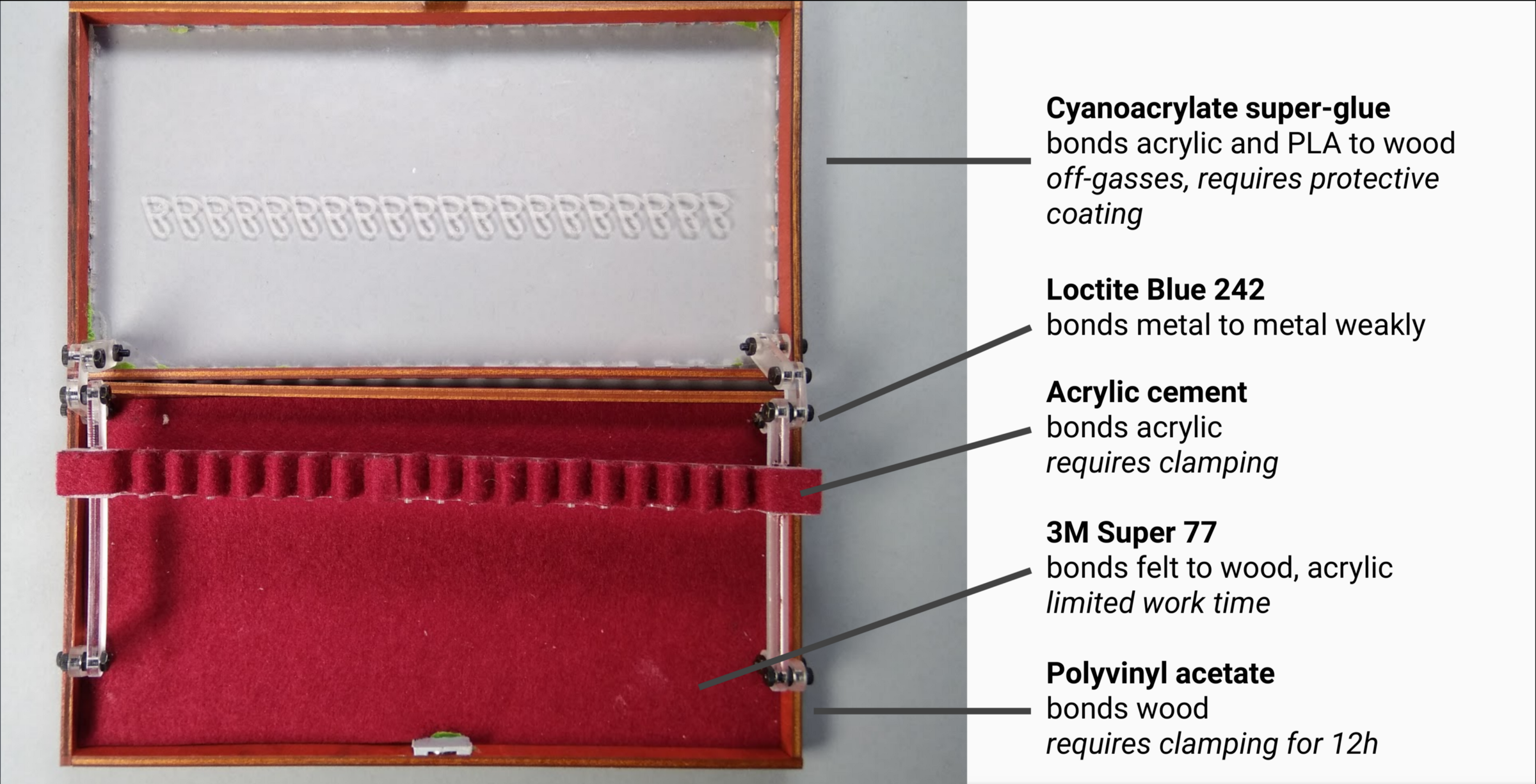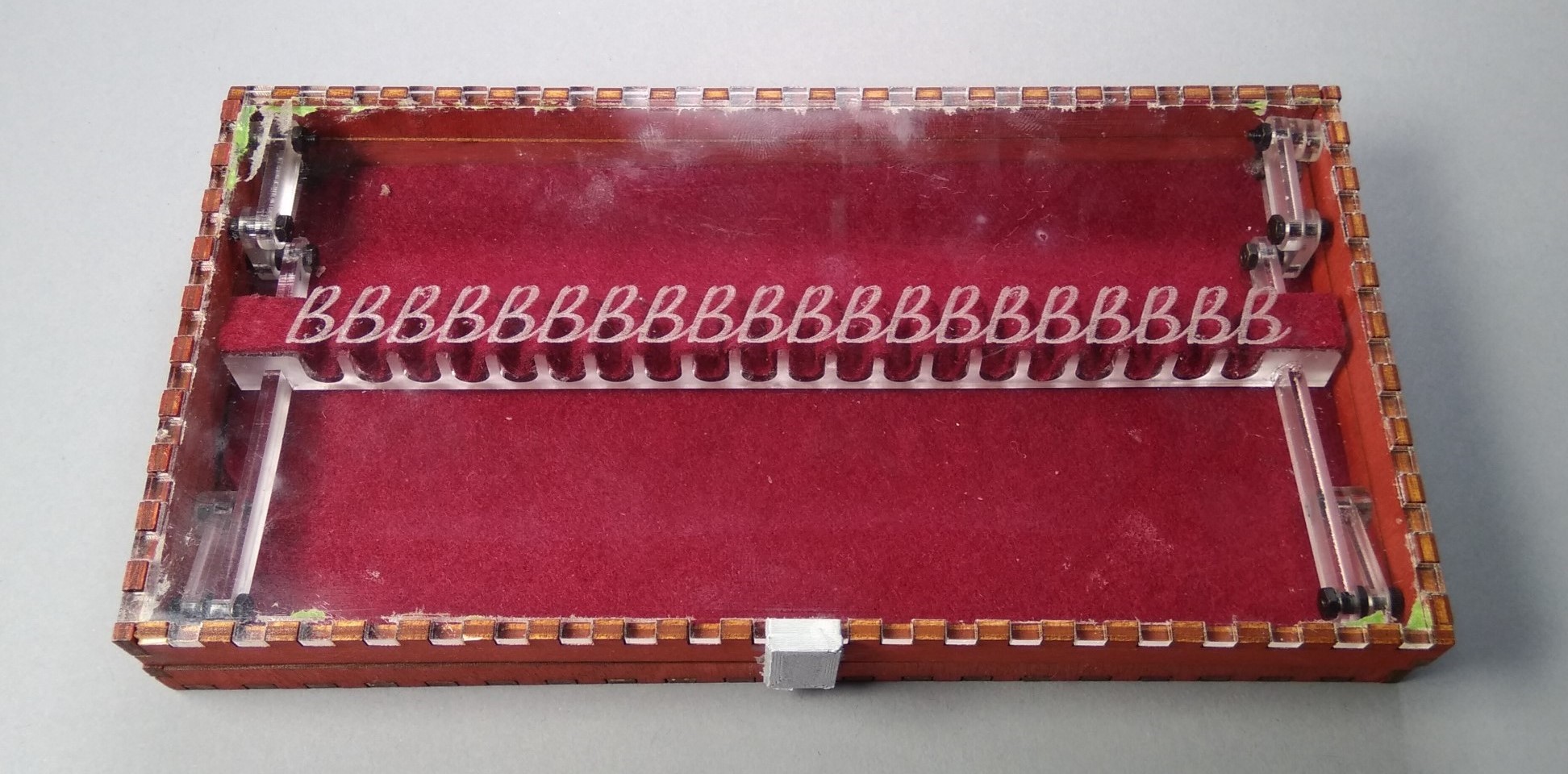Professional oboists keep many reeds with them. These have fragile wood tips and must be carried with care. Here’s a sample oboe reed:
The Competition
Commercial carrying cases are expensive. Here are some examples from Edmund Nielsen Woodwinds:
](enw1.png) Reed cases from [Edmund Nielsen Woodwinds](https://www.nielsen-woodwinds.com/en/)
Reed cases from [Edmund Nielsen Woodwinds](https://www.nielsen-woodwinds.com/en/)
Design
The reed box was designed parametrically in Fusion 360, with a sample render:
I used a folding parallelogram design for the moving parts and verified that the movement could open and close with Fusion’s built-in motion study tools. The entire box is designed to be laser cut from 3mm acrylic and birch plywood, with a 3d-printed magnetic latch to hold it close. The mechanical movement was initially designed to use 3d-printed pins, but the pin diameter was too small for a 3d printed part. The updated design is assembled using M2.5 screws and nuts:
Construction
The body is made from laser-cut wood that is glued together. We cover the acrylic parts with tape to prevent offgassing residue, and clamp to ensure a strong bond:
Movement
The reed carriage itself is made by stacking and gluing four identical laser-cut cross sections. Some compressible felt is glued over the top to provide friction to retain the reeds. Each reed box requires 8 nuts, and 6 screws (of varying sizes). We apply Loctite Blue 242 threadlocker on some nuts to prevent the pieces from coming apart under repeated articulation.
Wood Stain
 From left to right: MinWax crimson water-based stain with boiled linseed oil, MinWax Gel Mahogany stain, and MinWax crimson water-based stain (double)
From left to right: MinWax crimson water-based stain with boiled linseed oil, MinWax Gel Mahogany stain, and MinWax crimson water-based stain (double)
We used Minwax water-based and gel stains to stain the wood. After some experimentation, we discovered that the best process is to stain the wood before cutting. The stain only penetrates a little way through the wood, so we can also engrave patterns into the wood:
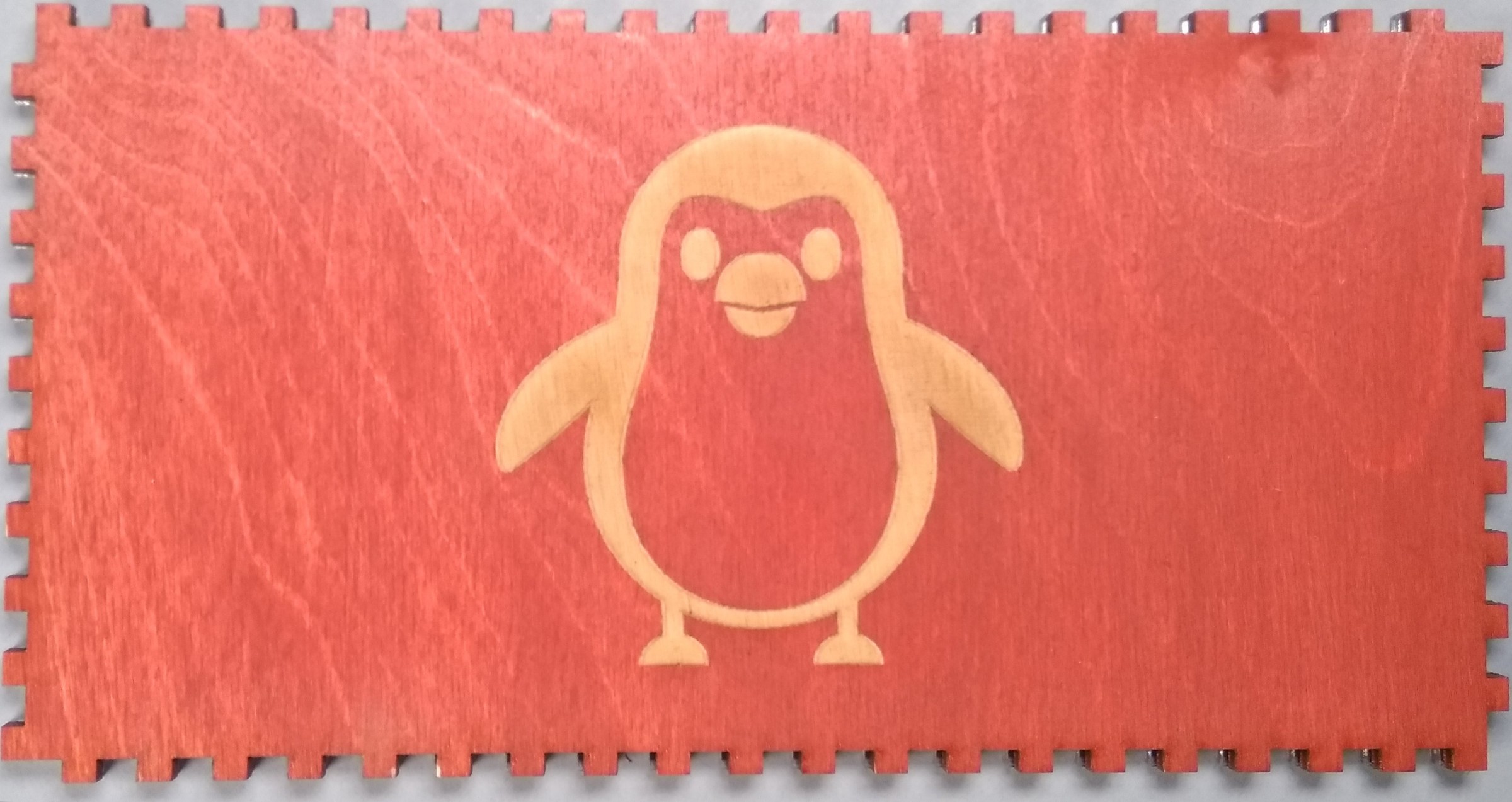 We raster engrave a penguin on the bottom of the box.
We raster engrave a penguin on the bottom of the box.
Latch
The latch is the only 3d printed component in the project. A pair of 7mm neodymium magnets are used to hold the latch closed.
 The latch is glued onto the box.
The latch is glued onto the box.
Adhesives
We use five different adhesives to assemble the box. Here’s the breakdown:
Closing
Here it is, fully assembled, and personalized with a repeating B:


